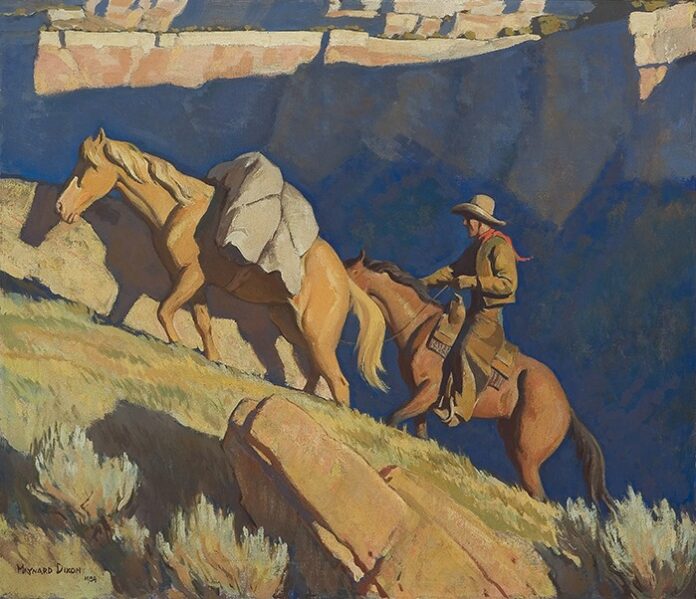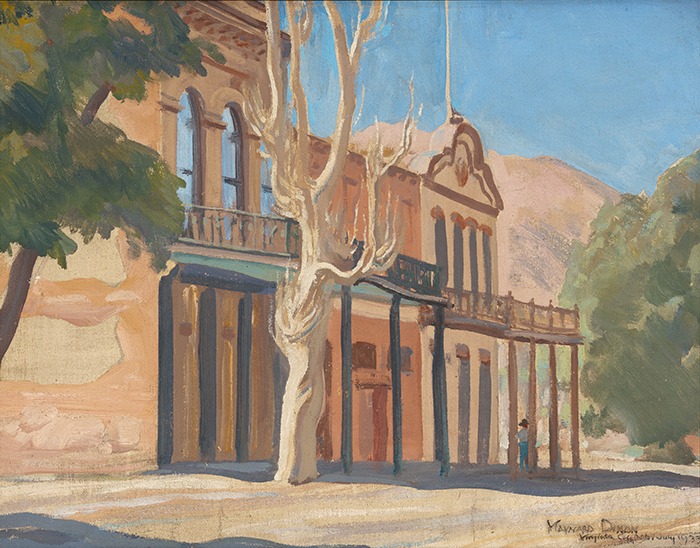
On view at the Nevada Museum of Art is “Sagebrush and Solitude: Maynard Dixon in Nevada,” the first comprehensive exhibition documenting his visits to the Silver State. From 1901 through 1939, Dixon made several trips from his San Francisco home to depict the striking landscapes of the Great Basin and Sierra Nevada region. On view are nearly 150 paintings and drawings, many rarely or never seen before.

From the first sketching trip taken with fellow artist Edward Borein in 1901, Dixon captured the beauty of Nevada’s open spaces, which were fast being transformed by external forces. Among his favorite subjects were old homesteads, wild horses, and stands of cottonwood trees — romanticized images that conjure the era before modernization. Historian Kevin Starr (1940–2017) once noted that a driving impulse was Dixon’s “sense of imminent loss” of the geography, history, folklore, and culture of the American frontier. He sought to record it all through his art — and words — before it vanished.

Wearing a Stetson hat and cowboy boots, Dixon fashioned a persona that lent an air of authenticity to his search for the “Old West” as he imagined it. At the same time, he pushed stylistic boundaries and helped usher in a new style of modernism. In 1934 he was commissioned by the federal Public Works of Art Project to document the construction of what is now called the Hoover Dam near Las Vegas. Scholar John Ott says that these two dozen paintings “…depart dramatically from the nostalgic frontier scenes with which Dixon established his reputation.”
This groundbreaking project has been organized by Ann M. Wolfe, the museum’s chief curator and associate director, and is accompanied by a 250-page catalogue.







